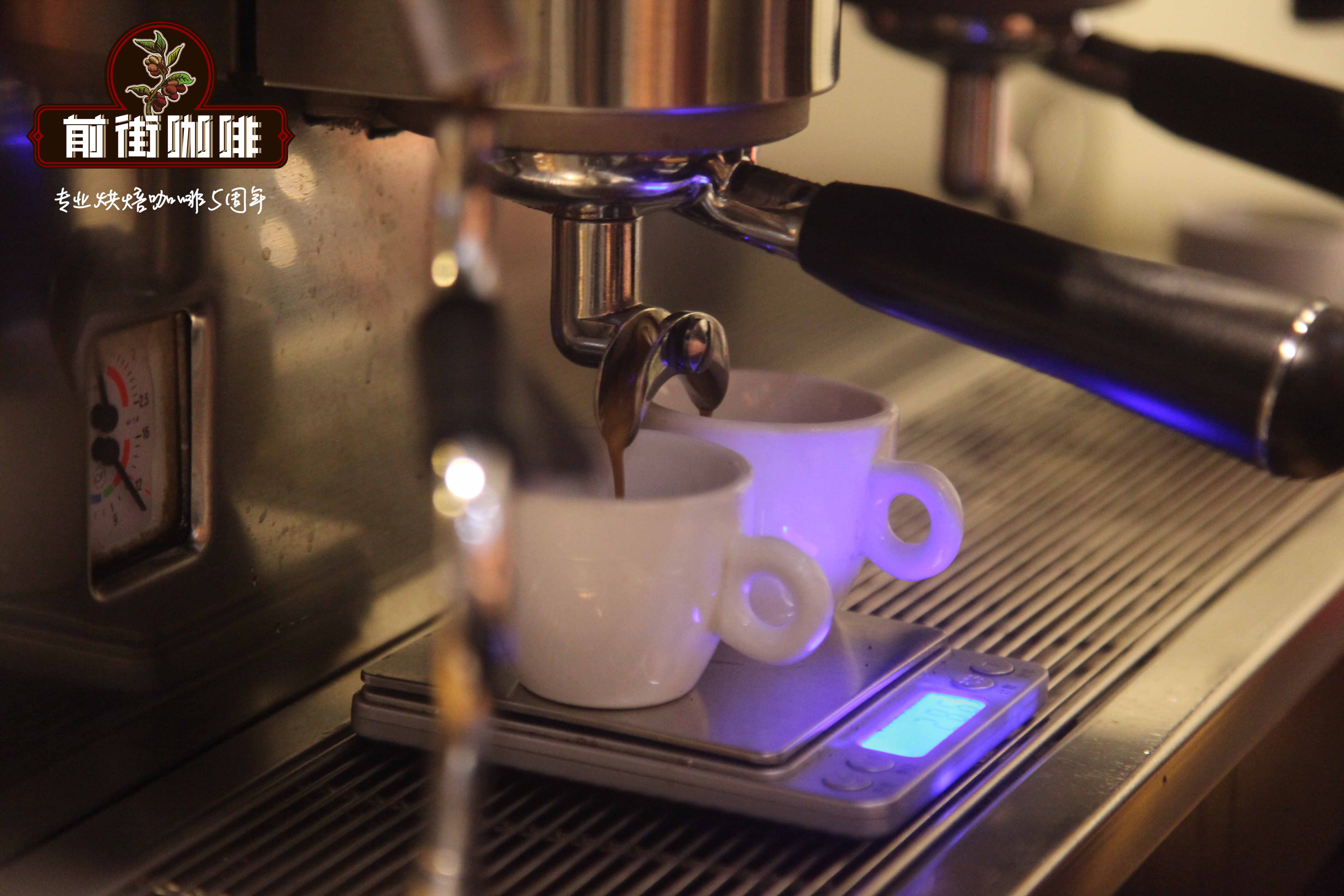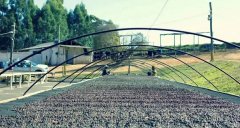Espresso | what is the effect of changing the water temperature of the Italian machine on espresso

Decades of trial and error have shown that most people prefer to use 85-95 °C water to make espresso. For lighter roasted coffee, the temperature range is usually narrower-90-95 °C. However, in this small range, there are still quite a lot of taste differences to be explored. The higher the temperature, the lighter the sweetness of the coffee and the stronger the acidity; the lower temperature can reduce the scorched taste when roasting, otherwise the gray-white flavor may be found in the deeper roasting. In this article, we will examine why changing the temperature does not always have the effect you want.
Choose an Italian coffee maker
Let's solve this problem first: not all machines react to a temperature change of 1 degree in the same way. Most modern multi-boiler machines do a very good job of providing precise extraction temperatures. Note, however, that the old twin boiler machine may provide a slightly different temperature in each group, depending on the distance from the heating element or temperature sensor in the boiler. The extraction temperature control of a single boiler heat exchanger is more complex: changing the boiler temperature of 1 degree does not necessarily increase the extraction temperature by the same amount, and the temperature range depends on the design of the machine.
What's the difference between 1 ℃
The extraction temperature is not only determined by the water temperature. Matt's article on temperature balance, as well as a more detailed model in DIY Coffee Guy, explains that the change in grinding temperature can have a great impact on the effective bubbling temperature. During use, the grinder can easily rise from room temperature to 50 °C or higher-enough to change the effective extraction temperature by several degrees. In order to solve this problem, it is worth trying to lower the extraction temperature during the busy period.
The extraction time also affects the extraction temperature. In the slow process, the water has more time to transfer heat to the coffee and the surrounding environment, thus lowering the effective extraction temperature. These factors may be difficult to control, but if they are not taken into account, they can easily offset the effect of a temperature change of one degree.
Temperature and extraction
In the general process of coffee extraction, the higher the temperature, the higher the extraction rate. Most compounds in coffee dissolve more easily at higher temperatures, so they are easier to extract.
There is an important exception: gases such as carbon dioxide actually dissolve less at higher temperatures. Carbon dioxide plays an important role in the extraction process of espresso. It interferes with the extraction process by increasing the resistance to water flow. Although this may make the relationship between temperature and extraction less linear in espresso than in filter, the increase in temperature will still increase the extraction of espresso.
Still, the extraction rate is only part of the story-two espressos can taste very different when extracted at 20% at different temperatures. To understand why, we need to take a closer look at individual compounds extracted from espresso.
Effect of temperature on individual compounds
Although it is true that most compounds dissolve more easily at higher temperatures, the dissolution effects of different molecules are quite different. Ted Lingle pointed out in "The Coffee Brewing Handbook" that when the extraction temperature of coffee increased from 70 °C to 94 °C, the amount of sucrose extracted increased, while the amount of citric acid and malic acid remained stable. Similarly, the extraction rates of phenolic compounds (which bring smoke, scorch, spiciness and bitterness) are more sensitive to temperature changes than those of chlorogenic acid or caffeine.
Therefore, increasing the temperature will not only increase the amount of extract, but also change the proportion of different compounds in the extract. This means that even if the total amount of extraction remains constant, changing the extraction temperature will change the taste balance.
The balance of aroma compounds varies with temperature in a similar manner. The researchers found that espresso brewed at 92 °C contained higher concentrations of ketones and aldehydes associated with fresh and fruity flavor than espresso brewed at 88 °C. At 96 °C and above, the concentration of pyrazine (phenazine) increases, which is related to the taste of baking, soil and mildew.
At higher extraction temperatures, some compounds even begin to decompose. At temperatures above 96 °C, the same researchers found lower concentrations of chlorogenic acid and trigonelline because these molecules decomposed in espresso. This also affects the taste balance of the lens: at high temperatures, chlorogenic acid breaks down into caffeine and quinic acid, which are more bitter than chlorogenic acid.
Obviously, temperature has a unique effect on the taste balance and aroma of espresso. It is a tool to help get the sweetest and most ideal aroma from espresso. However, temperature changes can affect different compounds in different ways, making it difficult to predict the exact effects of temperature changes on the taste of coffee. Like coffee, finding the ideal temperature is a process of constantly trying, making mistakes, and tasting a lot.
Important Notice :
前街咖啡 FrontStreet Coffee has moved to new addredd:
FrontStreet Coffee Address: 315,Donghua East Road,GuangZhou
Tel:020 38364473
- Prev

Decaf treatment? What is the carbon dioxide supercritical treatment of decaf coffee? Dioxin
Qianjie Coffee briefly describes the carbon dioxide supercritical treatment of decaf coffee the step of decaine treatment can only be carried out in the state of raw beans of sub-coffee. Today, there are three main types of treatments to remove caffeine: traditional / European treatment (European Process), Swiss water treatment (SWP,SwissWater Process), and carbon dioxide supercritical treatment (CO?
- Next

Where does the sweetness of coffee come from? why is sun treatment sweeter than washing?
Sun-treated coffee is usually sweeter and more mellow than water-washed coffee and usually has a unique fruity flavor. Intuitively, the sweetness, taste and flavor of sun-treated coffee should come from prolonged contact with the sugary, sticky pulp of coffee fruit, but is there any evidence to prove it? If not, what will happen? Is natural coffee high in sugar? Coffee beans
Related
- What is the meaning of lactic acid fermentation with coffee bean treatment?
- How to judge the state of foam by sound?
- How does the latte pull out the unicorn pattern? Come to get for a little trick to improve the flower pull!
- Will flower pulling affect the taste of the latte?
- Do you know the history of coffee?
- The difference between honey treatment and sun washing what is raisin honey treatment?
- What kind of milk can a novice use to make coffee foam to keep the foam longer? The correct method and skills of milking tutorial sharing
- Why do washed coffee beans taste sour? Flavor characteristics of washed Coffee
- Introduction to the skill of how to practice the size and height of water injection around the circle of hand-brewed coffee
- How do beginners practice coffee flower drawing from scratch?

